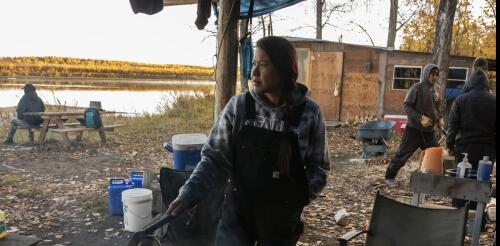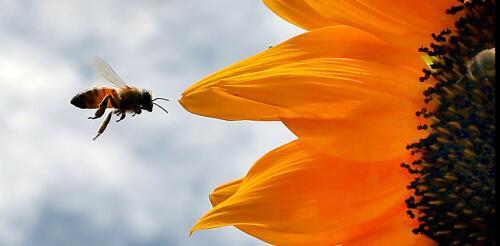environment
The year 2023 shattered the record for the warmest summer in the Arctic, and people and ecosystems across the region felt the impact. Wildfires forced evacuations across Canada. Greenland was so warm that a research station at the ice sheet summit recorded melting in late June, only its fifth melting event on record. Sea surface temperatures in the Barents, Kara, Laptev and Beaufort seas were 9 to 12 degrees Fahrenheit (5 to 7 degrees Celsius) above normal in August. While reliable instrument measurements go back only to around 1900, it’s almost certain this was the Arctic’s hottest summer in centuries. Summer heat extremes in 2023 and over time. NOAA, Arctic Report Card 2023 The year started out unusually wet, and snow accumulation during the winter of 2022-23 was above average across much the Arctic. But by May, high spring temperatures had left the North American snowpack at a recor...
In his collection of essays and poems published in 1920 titled “Darkwater,” W.E.B. Du Bois wrote about his poignant encounter with the beauty of the Grand Canyon, the stupendous chasm in Arizona. As he stood at the canyon’s rim, the towering intellectual and civil rights activist described the sight that spread before his eyes. The Grand Canyon’s “grandeur is too serene – its beauty too divine!” Du Bois wrote. “Behold this mauve and purple mocking of time and space! See yonder peak! No human foot has trod it. Into that blue shadow, only the eye of God has looked.” But Du Bois’ experience undermined a widely held assumption that was reinforced by early conservationists like Theodore Roosevelt – that only white people could appreciate the landscapes of national parks. For Roosevelt and his progressive allies, saving nature was connected to saving the white race. My research on the history of national parks shows...
The ways an urban neighborhood is built and the characteristics of the people who live there are both related to how hot it gets. That is the result of our study, published by the Journal of Buildings. If you have ever noticed that some parts of a city feel significantly hotter than others, you have experienced a phenomenon known as the urban heat island effect. This effect is most noticeable at night and when comparing rural and suburban surroundings with urban ones. How we did our work Our interdisciplinary group of researchers studied two Philadelphia census tracts and found a clear link between outdoor temperature and specific urban characteristics. We then asked whether these urban characteristics can be related to the social vulnerability of the residents. Social vulnerability is a concept that goes beyond the residents’ income to include housing conditions and characteristics of the people – such as their age, education, disability and race. Our social vulne...
Every year, Americans buy somewhere between 35 million and 50 million Christmas trees, and many more pull an artificial tree out of storage for the season. In all, about three-quarters of U.S. households typically have some kind of Christmas tree, surveys show. People often ask which is more sustainable – a real tree or an artificial one? It’s a big debate, and the answer depends on who you ask and which factors you consider. A more useful question is: How do I find the most sustainable tree of the kind I want to get? I’m a forestry professor who works on issues of sustainability. There are advantages and disadvantages to both cut trees and artificial trees. Here are some tips to consider for each. Cut Christmas trees require water and maintenance – and careful thought about disposal. 10'000 Hours/DigitalVision via Getty Images If you’re buying a live Christmas tree W...
Bees help pollinate over a third of the world’s crops, contributing an estimated US$235 billion to $577 billion in value to global agriculture. They also face a myriad of stresses, including pathogens and parasites, loss of suitable food sources and habitat, air pollution and climate-driven weather extremes. A recent study has identified another important but understudied pressure on bees: “inert” ingredients in pesticides. All pesticide products in the U.S. contain active and inert ingredients. Active ingredients are designed to kill or control a specific insect, weed or fungus and are listed on product labels. All other ingredients – emulsifiers, solvents, carriers, aerosol propellants, fragrances, dyes and such – are considered inert. The new study exposed honeybees to two treatments: the isolated active ingredients in the fungicide Pristine, which is used to control fungal diseases in almonds and other crops, and the whole Pristine formulation...




